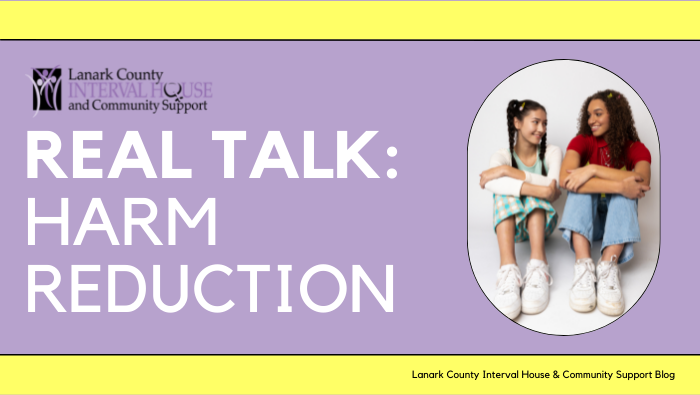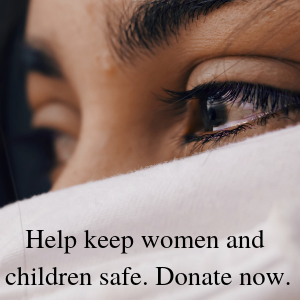Here at Lanark County Interval House and Community Support, we work from a Harm Reduction approach in all areas of service. The term Harm Reduction might be familiar to you, but what does it really mean and how does it benefit victims of violence?
What is Harm Reduction?
Although the Harm Reduction approach is commonly used to handle substance abuse with things like a safe injection sites or needle exchange programs, it is something we all use in our everyday lives.
When you put your seatbelt on in the car or wear a helmet on your bike, you are reducing the potential for harm that arises from the activity. Simply put, the Harm Reduction approach decreases the risks associated with behaviours without expecting folks to abstain from those behaviours.
Stopping potentially harmful behaviours like substance use is not always realistic or desirable. This approach allows people to make their own informed decisions for their lives and bodies while having access to resources, education, equipment, and support to keep themselves safe.
Why does LCIHCS use the Harm Reduction approach?
At LCIHCS, Harm Reduction is about more than substance use, it’s about safety and the ability to make choices. One of our core values is allowing women to make choices for themselves and their bodies; this includes how she chooses to handle her abusive situation as well as how she may use substances.
Taking a Harm Reduction approach with our clients allows for more openness in conversations with staff, more awareness of safe use practices, and the opportunity for women to learn about the tools and resources available to them. Candidness between staff and clients creates an atmosphere of support and empowerment that allows us to provide even better service.
How can this approach benefit victims of violence?
Violence is often about power. Women who experience violence have had their power taken from them by their abusers. Our staff provide support, resources, and education to allow women to make the most informed decisions possible for themselves. This gives our clients the opportunity to take back power over their bodies.
Those who experience trauma often have multiple coping strategies. Have you ever had a hard day at work and come home to have a glass of wine or beer to ease the heaviness? You have used a coping strategy that many of us use! This strategy is no different from others; the important thing is being able to decide how you can reduce the harm associated with your chosen behaviour.
There is so much stigma around substance use and many myths that influence community support, which creates barriers to service access. In addition to the barriers that victims of violence already face, marginalized groups have added trouble accessing support. Folks who are disabled, those in the 2SLGBTQ+ community, BIPOC communities, newcomers to Canada, those in low-income groups, and others need openness and support from service providers to make the best decisions for their own lives.
These are the core principles of Harm Reduction that we at LCIHCS use to inform our policies and programming:
PragmaticismHarm Reduction accepts that the nonmedical use of psychoactive or mind-altering substances is a universal phenomenon. It is almost inevitable in our society that folks will have access to, and use, substances.
Human RightsHarm Reduction respects the basic dignity and rights of people. No judgement is made on a person’s choice to use. No coercion attempts are made to stop that use.
Maximize Intervention OptionsHarm Reduction recognizes that people benefit from a variety of different approaches. There is no one approach that works for everyone; focus is placed on providing options.
Priority of Immediate GoalsHarm Reduction starts with “meeting the person where they are” in their life, with the immediate focus being on the most pressing needs at that time.
Client Involvement
Harm Reduction acknowledges that individuals are the best sources of information for their own situations, and need to be empowered to join service providers to decide on the best approach to reduce harm. The active participation of clients is at the heart of Harm Reduction.
What can I do?
Harm Reduction can be as simple as wearing a lifejacket in a boat. When it comes to substance use, here are a few things you can do as a community member to support victims of violence and/or substance users you may know:
Be aware of services and supports available in your community. Share these resources with folks around you who may need them.
Respect the fact that people have the right to make their own choices about what they do with their bodies.
Understand that women who experience violence live through trauma that may require a different approach than what you are used to. Keep an open and non-judgmental mind.
Resources
LCIHCS’ Downloadable Guide to Harm Reduction
Harm Reduction: Canadian Drugs and Substances Strategy
Leeds, Grenville & Lanark Health Unit: Drug Use & Harm Reduction
Recovery Research Institute: Harm Reduction


